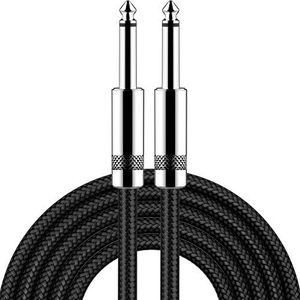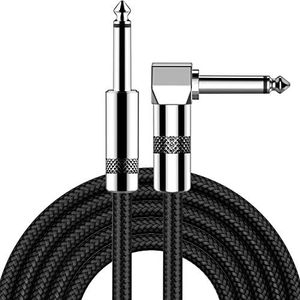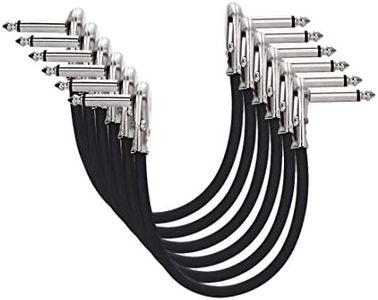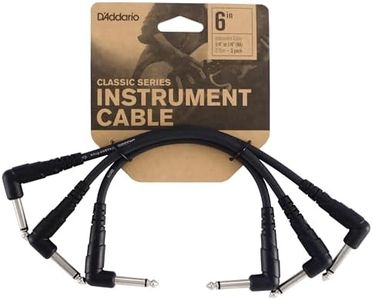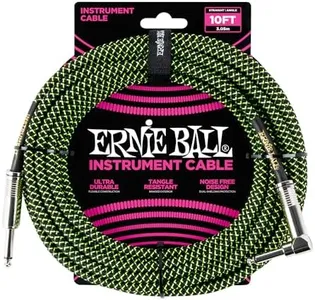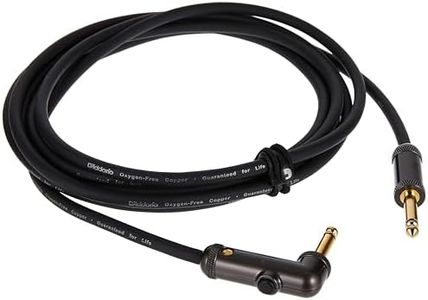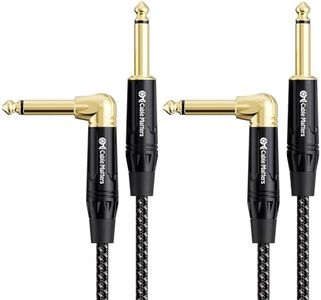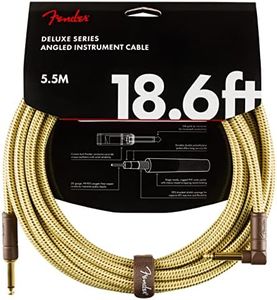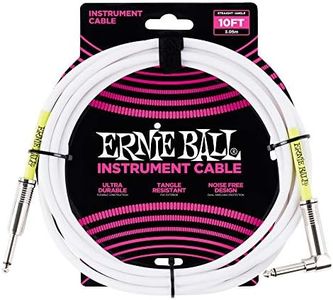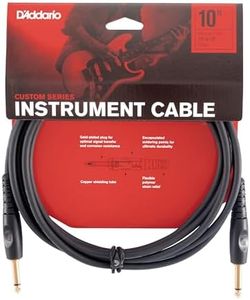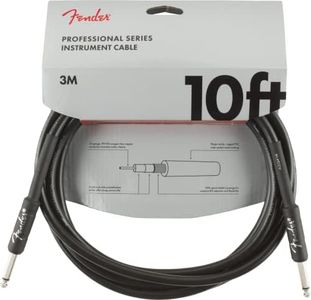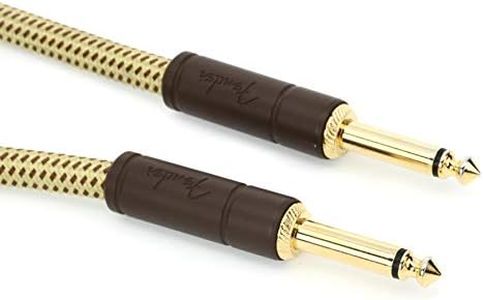We Use CookiesWe use cookies to enhance the security, performance,
functionality and for analytical and promotional activities. By continuing to browse this site you
are agreeing to our privacy policy
10 Best Guitar Cables
From leading brands and best sellers available on the web.Buying Guide for the Best Guitar Cables
Choosing the right guitar cable is more important than many people think. A good cable ensures your sound is clear and reliable, while a poor one can introduce noise, signal loss, or even fail during a performance. When picking a guitar cable, you should consider how and where you'll use it, how much durability you need, and what kind of sound quality you expect. Understanding the key specifications will help you make a choice that matches your playing style and environment.Cable LengthCable length refers to how long the cable is from end to end. This is important because longer cables can be more convenient for moving around, but they can also cause more signal loss and noise. Short cables (under 10 feet) are great for home practice or when you’re close to your amp, as they keep your signal strong and clear. Medium lengths (10-20 feet) are a good balance for most players, offering enough freedom to move without much signal loss. Long cables (over 20 feet) are useful on stage or in large spaces, but they may slightly reduce sound quality. Choose a length that gives you enough movement without being excessive for your needs.
Cable ShieldingShielding is the layer inside the cable that protects your signal from outside electrical noise and interference. Good shielding is important because it keeps your sound clean and free from unwanted hums or buzzes. There are different types of shielding, like braided, spiral, or foil. Braided shielding offers the best protection and is more durable, making it ideal for frequent gigging or noisy environments. Spiral shielding is flexible and good for home use, while foil shielding is lightweight but less durable. If you play in places with lots of electronic equipment or radio signals, look for cables with strong shielding.
Connector TypeThe connector is the metal plug at the end of the cable that goes into your guitar and amp. Most guitar cables use a standard 1/4-inch (6.35mm) TS (tip-sleeve) connector. Some cables have straight connectors, while others have right-angle connectors. Straight connectors are versatile and fit most guitars and amps, while right-angle connectors are useful if your guitar’s input jack is on the side or in a tight spot. Think about your guitar’s design and how you like to set up your gear to decide which connector shape works best for you.
Cable Thickness (Gauge)Cable thickness, or gauge, refers to how thick the cable is. Thicker cables are usually more durable and less likely to tangle or break, but they can be heavier and less flexible. Thinner cables are lighter and easier to handle, but may not last as long, especially if you move around a lot. If you play gigs or travel with your gear, a thicker cable might be a better choice. For home use, a thinner cable can be more convenient.
Conductor MaterialThe conductor is the wire inside the cable that carries your guitar’s signal. Most cables use copper, but some use higher-purity copper or are coated with materials like silver. Higher-quality materials can slightly improve sound clarity and reduce signal loss, but the difference is often subtle. If you want the best possible sound and reliability, look for cables with high-purity copper conductors. For most players, standard copper is more than enough.
Durability FeaturesDurability features include things like reinforced connectors, strain relief sleeves, and tough outer jackets. These features help the cable withstand bending, pulling, and stepping on, which is important if you play live or move your gear often. If you’re rough on your equipment or play in busy environments, look for cables with extra durability features. For careful home use, basic durability is usually sufficient.
